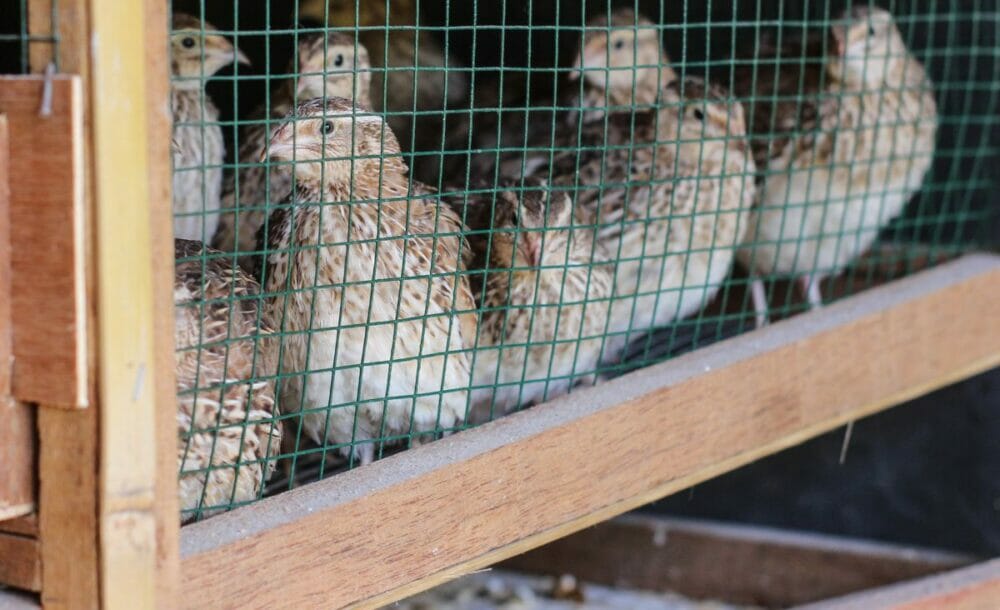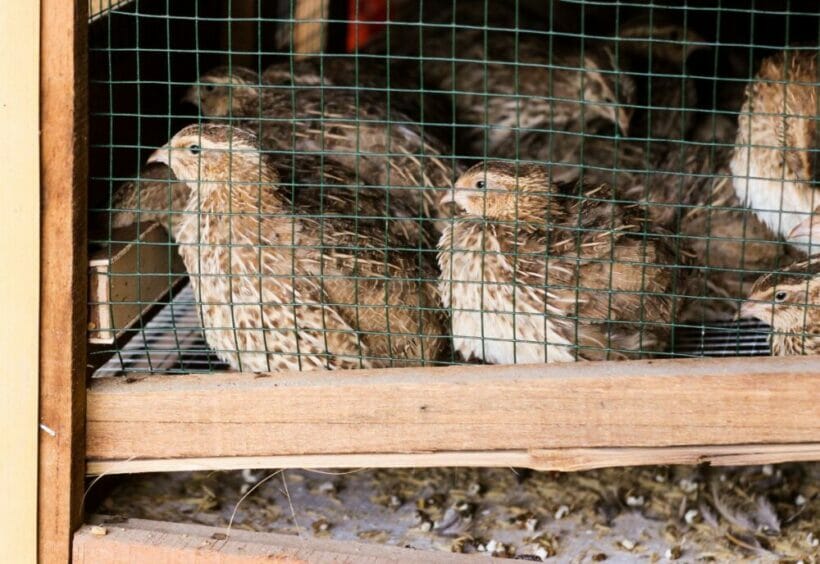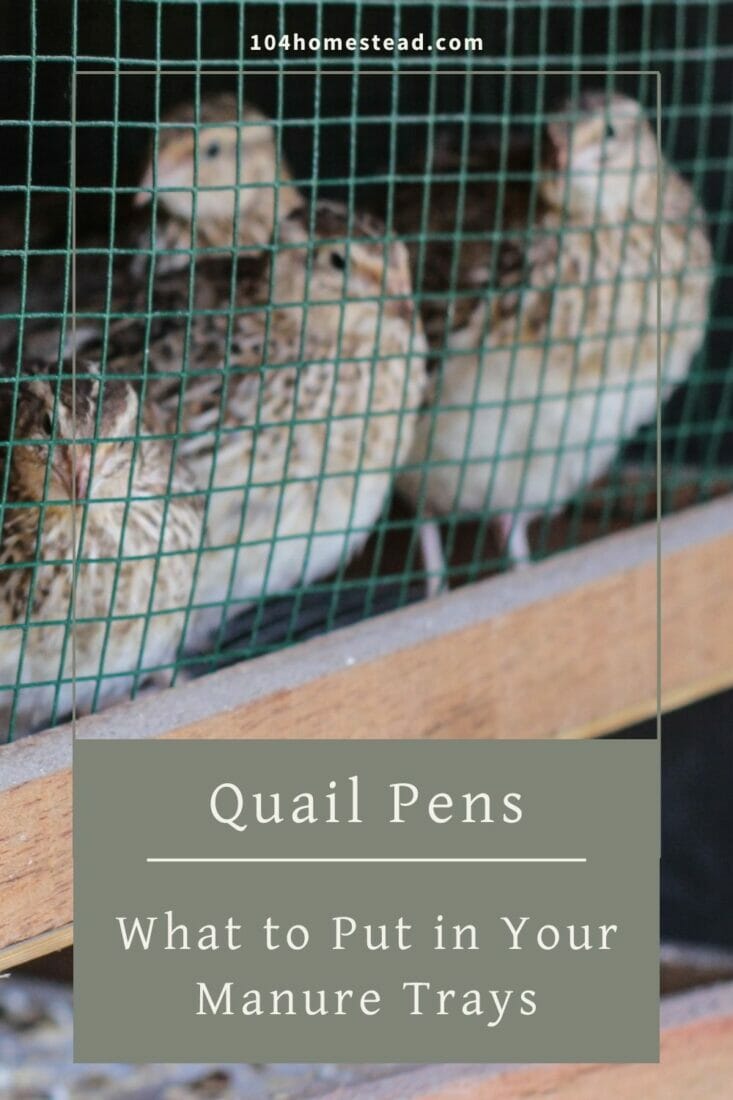What to Put in Your Quail’s Manure Trays to Keep Them Odor-Free
Discover the best materials and techniques for managing your quail’s manure trays to keep their cages clean and smell-free.

Welcome to our blog post dedicated to the topic of managing your quail’s manure trays!
As any quail owner knows, the scent of their waste can be quite pungent, especially when confined to pens instead of an open aviary. That’s why properly managing their manure trays is essential for maintaining a clean and odor-free environment for you and your quail.
This post will discuss different materials and techniques to simplify the cleanup process and help mitigate unpleasant odors. From pine shavings to newspaper and even a special sand blend, we’ll discuss the pros and cons of each option and provide practical tips to ensure a tidy and fresh living space for your quail.
So, let’s dive in and discover the best solutions for your manure trays to keep your quail cages fresh and clean!
Pine Shavings
Pine is probably one of the most common materials used in poop trays. If you have other poultry on your homestead, you most likely already have it on hand. It’s cheap, easy to find at any farm store, and easy to store.
While pine shavings are often chosen for quail manure trays due to their affordability, their practicality may be compromised by a few factors. Unfortunately, when installing or removing the tray, pine shavings have a tendency to scatter onto the floor, creating an additional cleaning hassle. Moreover, the birds’ wings can contribute to the dispersal of pine shavings as they move, and even the movement of people around the pens can further disturb and disperse the shavings.
While pine shavings may be a popular option, their susceptibility to displacement and messiness should be considered when selecting materials for your quail’s manure trays.
Newspaper
Newspaper is a convenient and cost-effective option for lining your quail’s manure trays. It offers easy cleanup as it absorbs moisture and prevents direct contact with the tray’s surface. The abundance of newspapers makes it accessible and practically free, making it an attractive choice for many quail owners.
It’s important to note that while newspaper effectively simplifies the cleaning process, it may not effectively control the odor emanating from the quail’s waste. The smell of the poop can still be noticeable, especially if left for an extended period. Therefore, if odor control is a priority for you and your quail’s living environment, alternative deodorizing materials or techniques might need to be considered in conjunction with using newspaper.
Jessica’s Sand Blend
I’ve always been an advocate of using sand for poultry bedding.
This mixture includes play sand and Sweet PDZ Horse Stall/Coop Refresher. By blending 1/3 PDZ with 2/3 play sand and adding a handful of dried lavender, I have created a powerful solution for lining the quail’s manure trays.
This sand blend offers several advantages. First, it stays in place, minimizing the chances of scattering or displacement when the trays are installed or removed. This ensures a tidy and contained environment. Second, the mixture effectively knocks down the strong odors associated with quail waste. The combination of PDZ and lavender helps neutralize and mask the scent, providing a fresher environment for both the quail and you.
Furthermore, cleaning the trays becomes a breeze with this sand blend. Its composition allows for easy waste removal, and any leftover odor is quickly absorbed and minimized. I use a kitty litter scoop and scoop the poop twice a week. Monthly, I will switch out the sand blend entirely and wash down the trays before refilling them.

Play sand is reasonably priced at Home Depot and other big box stores. Consider also checking with your farm supplier, as they may carry play sand and eliminate the need for an additional stop when buying supplies. For Sweet PDZ, both granules and pellets are available, but I have found that the granules work best. When purchasing lavender, Amazon offers the best prices, especially when buying in bulk. A 5-lb bag of lavender typically lasts us around six months, but the duration will vary depending on the number of quail you have. If you want to save money, you can even grow your own lavender and dry it to use in the trays.
Overall, this blend offers a practical, odor-controlling, and low-maintenance solution.
Kick Odor Control Up a Notch
In addition to using the sand blend with PDZ and lavender for lining your quail’s manure trays, consider placing a layer of activated charcoal on top. Activated charcoal is known for its odor-absorbing properties and can further help control and eliminate any lingering smells from the quail waste. Simply sprinkle a thin layer of activated charcoal on top of the sand blend whenever you scoop out the manure. This extra step will enhance the overall odor-controlling effectiveness of your manure trays, providing a cleaner and more pleasant environment for your quail.
Don’t want to use lavender?
If you prefer not to use lavender in your quail’s manure trays, there are other dried herbs you can consider. Some options include rosemary, mint, thyme, or chamomile. These herbs add a pleasant scent and have natural deodorizing properties that can help mask the smell of quail waste. Experiment with different herbs to find the best scent for you and your quail.
Frequently Asked Questions
If you’ve found value in this blog post and enjoyed reading it, why not share it with your Pinterest community? Pin the image below and spread the love!

Managing your quail’s manure trays is crucial for maintaining a clean and odor-free environment. Whether you choose pine shavings, newspaper, or the effective sand blend with PDZ and lavender, finding the right solution will simplify the cleanup process and ensure a fresh living space for both you and your quail. So implement these tips and enjoy a cleaner and more pleasant experience with your quail companions.
What materials or techniques have you found most effective for managing your quail’s manure trays? I would love to hear about your experiences and any other tips you may have to maintain a clean and odor-free environment for your quail. Share your thoughts in the comments below!
Looking for even more tips on raising Coturnix quail? Check out my dedicated site, Forget-Me-Not Quail Farm, for feeding guides, housing tips, and everything you need to keep your covey thriving. And for a quick-start guide to avoiding common quail-keeping mistakes, grab a copy of my book 5 Mistakes New Quail Owners Make. It’s packed with practical advice to help you raise happy, healthy quail!

